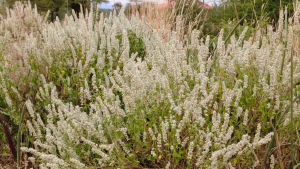
Honeybees are renowned for their golden nectar and their crucial role in pollination, but their sting also packs a surprising punch – medicinal one, that is. Another remarkable aspect of bees that’s been garnering attention. Here at Ambokili Farm, we recently welcomed a new buzzing contingent to our 7 hives and we’re not only interested in pollination and honey production but the potential to explore the fascinating world of bee venom therapy.
This fascinating substance, also known as apitoxin, is more than just a sting.
Bee venom, a complex cocktail of bioactive compounds, has been used in traditional medicine for centuries. Modern science is now catching up, unraveling the potential of this natural wonder.
Understanding Bee Venom
Bee venom, also known as apitoxin, is a colorless, acidic liquid secreted by honeybees through their stingers. It contains a complex mixture of proteins, peptides, and low molecular weight compounds that collectively contribute to its biological activity. T
The venom’s composition is a fascinating blend of over 80 different components with the primary components including melittin, apamin, adolapin, phospholipase A2, and hyaluronidase, each plays a significant role in its medicinal and therapeutic properties. These individual components work in concert, but it’s melittin that’s garnered particular scientific interest. Melittin possesses anti-inflammatory, analgesic (pain-relieving), and antimicrobial properties, making it a potential therapeutic target for various ailments.
Bee venom is primarily used by bees as a defense mechanism against threats. When a bee stings, it injects this venom into the target, causing pain and inflammation. While the immediate reaction to a bee sting is often unpleasant, the components of bee venom have been found to possess a variety of beneficial properties.
Summary of the Components of Bee Venom
Bee venom is composed of several active compounds, each with unique effects:
– Melittin: This peptide makes up about 50% of the dry weight of bee venom and has powerful anti-inflammatory and anti-bacterial properties.
– Apamin: Known for its ability to block certain potassium channels, apamin has potential neuroprotective effects.
– Adolapin: Exhibiting anti-inflammatory and analgesic properties, adolapin can help reduce pain and swelling.
– Phospholipase A2: While this enzyme contributes to inflammation, it’s also being studied for its potential to disrupt harmful cell membranes, which could be useful in treating diseases.
Harvesting Bee Venom
Harvesting bee venom is a meticulous process that requires care and precision to ensure both the well-being of the bees and the quality of the venom collected. Obtaining bee venom without harming the bees is a delicate process.
For this, one of 2 approaches can be used:
- The Honeybee Venom Extractor: This electrical device mimics the gentle stimulation of a bee visit to a flower, prompting the bee to extend its stinger and release a small amount of venom into a collection chamber.
- The Bee Weaver Method: A special mesh panel allows the queen bee to pass through while containing worker bees. The worker bees, in their attempt to sting the mesh, deposit venom on a collection surface.
These methods ensure minimal stress to the bees and allow for the collection of venom without disrupting honey production or harming the hive.
Benefits of Bee Venom
Medicinal Benefits
Bee venom therapy, also known as apitherapy, has been used for centuries in traditional medicine and is now gaining recognition in modern science for its therapeutic potential. Here are some of the notable benefits: Medical Applications of Bee Venom.
- Arthritis and Inflammation: Bee venom therapy (BVT) is gaining popularity as an alternative treatment for rheumatoid arthritis. The anti-inflammatory properties of melittin and adolapin can help alleviate joint pain and swelling, providing relief for arthritis sufferers. Melittin inhibits the production of pro-inflammatory cytokines, making it beneficial in treating conditions like arthritis and multiple sclerosis.
- Chronic Pain: Research suggests that bee venom may help manage chronic pain conditions. Its analgesic effects make it a potential candidate for pain relief therapies. Bee venom has analgesic properties due to the presence of adolapin and apamin. These components block pain receptors and reduce the sensation of pain, offering relief to individuals suffering from chronic pain disorders.
- Neurological Disorders: Studies have shown that apamin might have neuroprotective effects, offering hope for conditions like Parkinson’s and Alzheimer’s diseases. Bee venom’s ability to interact with the nervous system is an exciting area of ongoing research.
- Immune System Boost: Bee venom has been found to modulate the immune system, potentially helping in the treatment of autoimmune diseases. By influencing immune responses, bee venom could help restore balance in conditions where the immune system attacks the body. Apamin, another peptide in bee venom, has been shown to enhance immune responses, making bee venom useful in immunotherapy and in the treatment of autoimmune diseases.
- Antibacterial and Antiviral Effects: Research indicates that bee venom exhibits antibacterial and antiviral activities, making it a potential natural remedy for infections.
Beauty and Skincare
Bee venom is also making waves in the beauty industry. Known as “nature’s botox,” it is touted for its anti-aging benefits. When applied to the skin, bee venom can stimulate collagen production and improve skin elasticity, reducing the appearance of wrinkles and fine lines. It’s now a popular ingredient in many skincare products, from creams to serums.
Safety and Considerations
While bee venom has many promising benefits, it’s essential to approach it with caution. Bee venom therapy should only be administered by trained professionals, as improper use can lead to severe allergic reactions, including anaphylaxis. Individuals with bee allergies should avoid bee venom products altogether.
Additionally, the ethical and sustainable sourcing of bee venom is crucial. Harvesting bee venom can be stressful for bees, and methods that ensure the well-being of bee populations should be prioritised. Supporting practices that protect and preserve bee health is vital for the environment and the future of bee venom research.
Conclusion
Bee venom is a fascinating and potent substance with a wide range of potential benefits. From medical treatments to skincare innovations, this natural compound is proving to be a hidden treasure of the hive. As research continues, we may discover even more ways bee venom can enhance our health and well-being. Just remember, while the sting of a bee might hurt, the potential of its venom could be truly healing.
Whether you’re intrigued by its medical applications or its beauty benefits, bee venom is a reminder of the incredible power of nature. Next time you see a bee buzzing around, consider the hidden wonders it carries—more than just honey, it’s a source of healing and rejuvenation.






